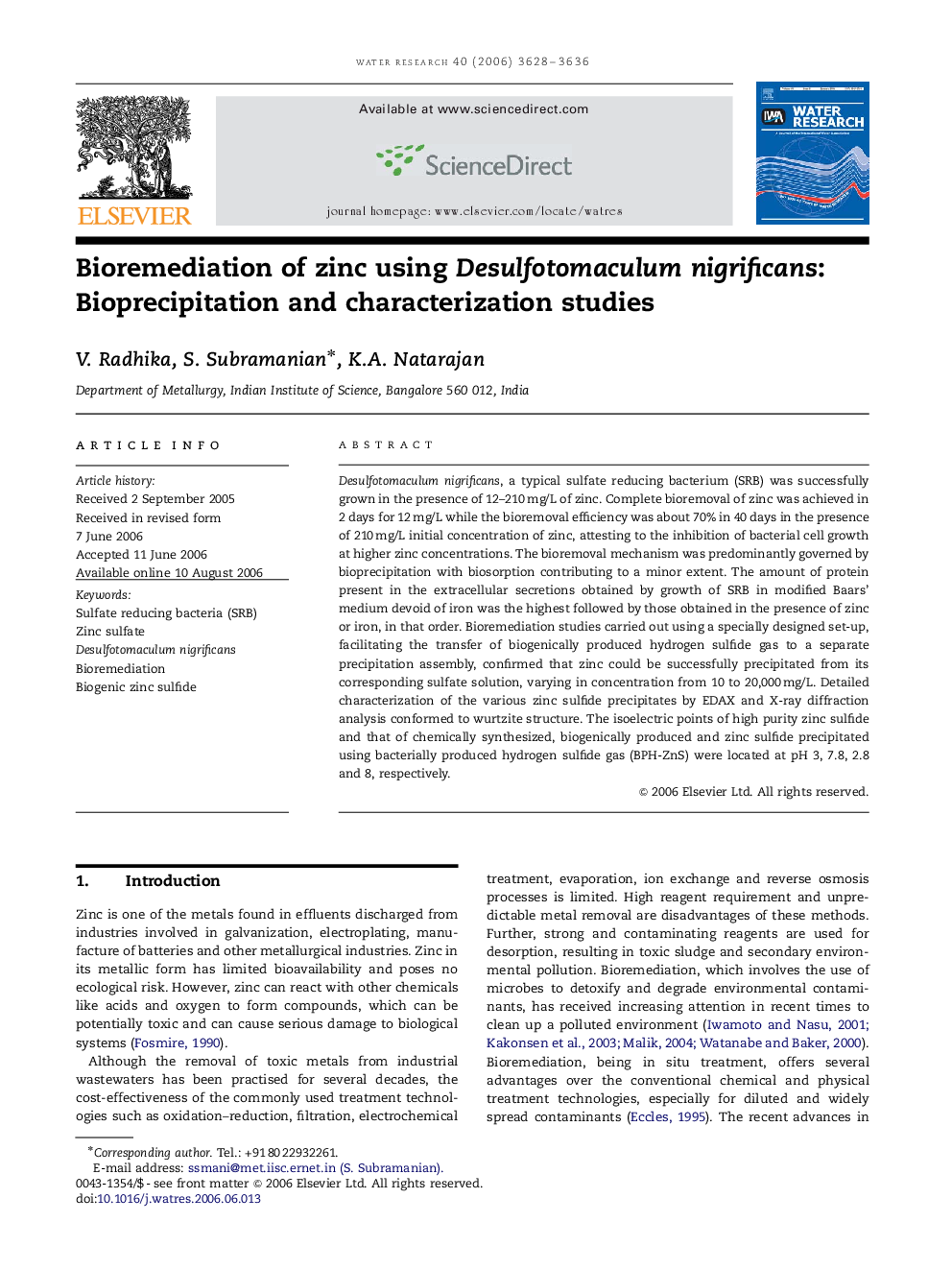| Article ID | Journal | Published Year | Pages | File Type |
|---|---|---|---|---|
| 4484537 | Water Research | 2006 | 9 Pages |
Desulfotomaculum nigrificans, a typical sulfate reducing bacterium (SRB) was successfully grown in the presence of 12–210 mg/L of zinc. Complete bioremoval of zinc was achieved in 2 days for 12 mg/L while the bioremoval efficiency was about 70% in 40 days in the presence of 210 mg/L initial concentration of zinc, attesting to the inhibition of bacterial cell growth at higher zinc concentrations. The bioremoval mechanism was predominantly governed by bioprecipitation with biosorption contributing to a minor extent. The amount of protein present in the extracellular secretions obtained by growth of SRB in modified Baars’ medium devoid of iron was the highest followed by those obtained in the presence of zinc or iron, in that order. Bioremediation studies carried out using a specially designed set-up, facilitating the transfer of biogenically produced hydrogen sulfide gas to a separate precipitation assembly, confirmed that zinc could be successfully precipitated from its corresponding sulfate solution, varying in concentration from 10 to 20,000 mg/L. Detailed characterization of the various zinc sulfide precipitates by EDAX and X-ray diffraction analysis conformed to wurtzite structure. The isoelectric points of high purity zinc sulfide and that of chemically synthesized, biogenically produced and zinc sulfide precipitated using bacterially produced hydrogen sulfide gas (BPH-ZnS) were located at pH 3, 7.8, 2.8 and 8, respectively.
